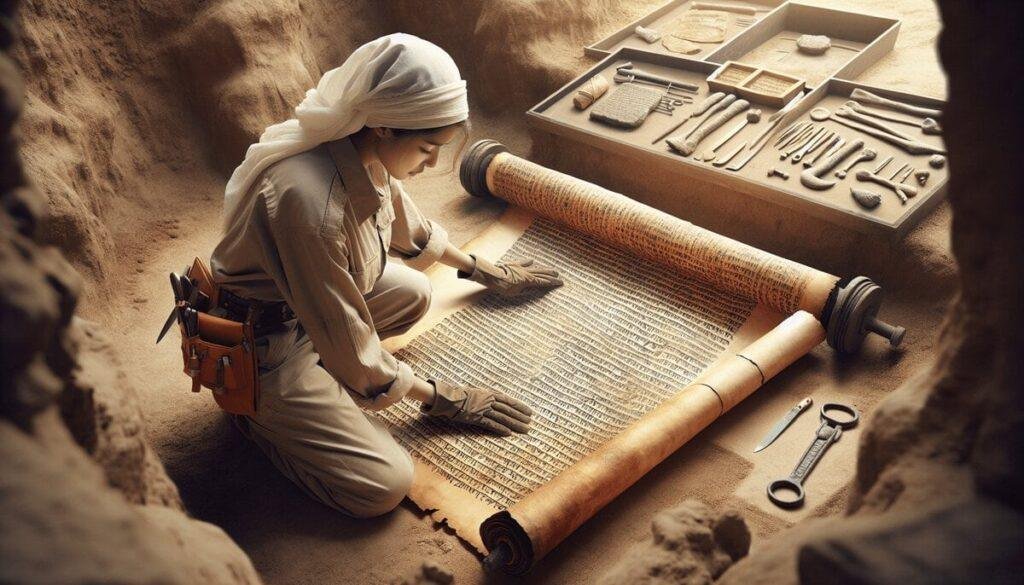In the pursuit of unraveling humanity's past, archaeological methods and techniques serve as essential tools.
Coincidentally, the initial stages of reconnaissance and surveying form the bedrock of any archaeological endeavor, laying the foundation for subsequent in-depth exploration and interpretation.
As excavation techniques start to unearth the mysteries buried beneath the surface, a meticulous process of artifact analysis and dating techniques emerges, shedding light on ancient civilizations and their ways of life.
However, it is the intricate web of conservation and preservation practices that ultimately safeguards these invaluable glimpses into history, ensuring their longevity for generations to come.
Excavation Techniques
Excavators meticulously unearth buried deposits and features using controlled techniques to reveal insights into ancient civilizations and historical events. These excavation techniques are essential for uncovering archaeological sites and understanding the mysteries of past civilizations. Through the strategic process of excavation, archaeologists can extract valuable information that sheds light on historical events and societal structures.
Archaeological excavation involves a systematic approach to carefully removing layers of soil and sediment to uncover artifacts, structures, and other remains from the past. By employing precise techniques, such as grid planning and stratigraphic analysis, researchers can make sure that each find is documented in its original context, preserving the integrity of the archaeological record. This meticulous methodology is critical for interpreting the significance of each discovery within the broader historical narrative.
Successful excavation not only unearths archaeological finds but also contributes to a deeper comprehension of ancient cultures and their interactions. By studying the spatial relationships between different features and artifacts within a site, archaeologists can reconstruct past activities and reconstruct the timeline of historical events. Through excavation, researchers can piece together the puzzle of our ancestors' lives, offering valuable insights into the development of human societies throughout the ages.
Surveying Methods
In the systematic exploration of archaeological landscapes, surveying methods play a pivotal role in identifying potential sites for excavation through the analysis of surface artifacts and cultural debris. Archaeological surveying involves conducting field surveys to locate sites of interest. This process is essential for making informed decisions about where to excavate based on the quantity and distribution of cultural materials found during the survey.
Utilizing technologies like drones and Google Earth enhances the accuracy and efficiency of surveying, aiding in the location of archaeological sites. GPS coordinates are vital for mapping and documenting the precise location of artifacts discovered during the survey, providing a detailed record for further analysis.
Field notes should include detailed documentation of features such as trails, roads, and house pits observed during archaeological surveying, offering valuable insights into the landscape and aiding in the interpretation of archaeological sites. Through meticulous surveying methods, archaeologists can better understand the historical context of a site before proceeding with excavation.
Artifact Analysis Process
The meticulous process of artifact analysis involves a thorough examination and systematic documentation of archaeological objects. Specialists utilize tools such as microscopes and X-ray fluorescence to explore into the composition and structure of artifacts. By studying these aspects, analysts can discern the materials used, manufacturing techniques applied, and potential cultural significance of the objects. This detailed analysis goes beyond mere description, offering insights into ancient technologies, trade networks, and societal practices through the lens of material culture.
During artifact analysis, detailed documentation is paramount. This includes recording precise measurements, intricate details, and contextual information to construct a thorough artifact profile. The data collected during this process forms the basis for interpreting the artifact's place within the archaeological record and understanding its significance in the broader historical context.
Dating Techniques
Utilizing various scientific methods, archaeologists employ a range of dating techniques to determine the ages of artifacts and establish chronological sequences in archaeological contexts. These methods include:
- Radiocarbon dating: This technique measures the decay of carbon isotopes in organic artifacts, providing insights into their age.
- Dendrochronology: By analyzing tree ring patterns in wooden objects, archaeologists can date these artifacts and gain information about past environmental conditions.
- Thermoluminescence dating: This method determines the time elapsed since materials were last exposed to heat or sunlight, aiding in dating archaeological remains.
- Stratigraphy: Examining the layers of soil and debris where artifacts are located helps establish a timeline based on the principle that older layers are found beneath more recent ones.
- Seriation: By arranging artifacts based on their stylistic similarities or differences, archaeologists can create a relative timeline of cultural changes.
These archaeological techniques play a pivotal role in piecing together the past, allowing researchers to understand the chronology of events and cultural developments through the analysis of archaeological remains.
Conservation and Preservation Practices
Examining the intricate strategies of preservation and conservation in archaeology reveals a meticulous process aimed at safeguarding invaluable artifacts for future study and appreciation. Preservation strategies, such as stabilization, documentation, storage, conservation, and public education, play a vital role in maintaining the integrity and significance of archaeological finds. Conservation practices are essential for protecting and preserving archaeological artifacts for the benefit of future generations. Investigative conservation and remedial conservation are conducted in well-equipped laboratories to secure the longevity of cultural heritage and valuable historical data.
Preservation efforts in archaeology aren't merely about storing artifacts; they encompass a range of activities designed to prevent deterioration and secure the survival of these objects. By implementing conservation practices, archaeologists can extend the lifespan of archaeological artifacts and contribute to the understanding of past civilizations. Investigative conservation involves in-depth analysis and research to determine the best course of action for preserving an artifact, while remedial conservation focuses on treatments to stabilize and repair damaged objects.


